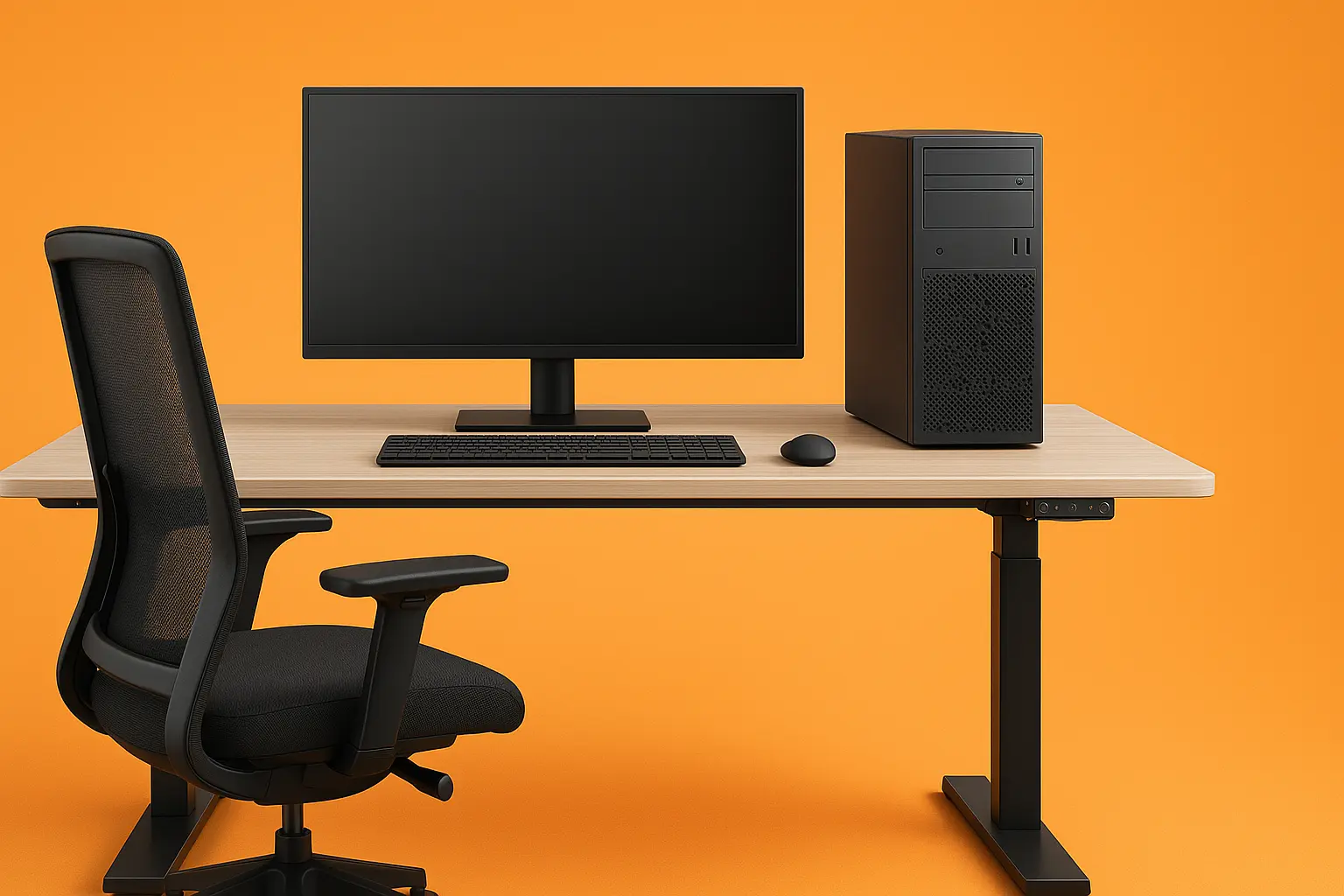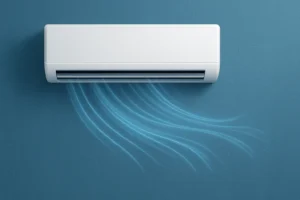Introduction
Purchasing a new PC is a significant investment, whether for work, gaming, or general use. Understanding the key components and specifications will ensure that you choose a machine that meets your needs both now and in the future. This comprehensive guide will explore the essential terms and considerations to keep in mind when buying a PC, helping you make an informed decision.
1. Processor (CPU): The Heart of Your PC
- Core Count:
- Dual-Core: Basic processing power, suitable for light tasks like browsing and word processing.
- Quad-Core: Balanced performance for multitasking, light gaming, and content creation.
- Hexa-Core and Octa-Core: Higher performance for demanding tasks like video editing, heavy multitasking, and gaming.
- Higher Core Counts: (e.g., 10, 12, 16 cores) for professionals in 3D rendering, scientific computing, and intensive content creation.
- Clock Speed (GHz):
- Base Clock: The standard operating speed of the CPU under normal conditions.
- Turbo Boost: The maximum speed the CPU can reach under load, useful for demanding applications.
- Importance: Higher clock speeds generally mean faster performance, but efficiency and architecture also play roles.
- Cache Memory:
- L1, L2, and L3 Cache: Small amounts of very fast memory located on the CPU, used to store frequently accessed data and instructions. More cache generally improves performance.
- Architectures:
- x86 vs. ARM: Most PCs use x86 architecture, but ARM-based processors are becoming more common, particularly in ultra-portable devices for their energy efficiency.
- Performance and Efficiency Cores: Some modern CPUs, like Intel’s Alder Lake, feature a mix of performance and efficiency cores to balance power consumption and processing power.
Discover the best processors with my expertly curated Top Lists.
2. Graphics Card (GPU): Powering Visual Performance
- Integrated vs. Dedicated Graphics:
- Integrated GPU: Built into the CPU, suitable for basic tasks, light gaming, and media playback.
- Dedicated GPU: A separate graphics card with its own memory (VRAM), essential for gaming, 3D rendering, and other graphics-intensive tasks.
- VRAM (Video RAM):
- Importance: Determines how much graphical data the GPU can handle at once. 4GB is sufficient for basic gaming, while 8GB+ is ideal for high-resolution textures and demanding games.
- NVIDIA vs. AMD:
- NVIDIA: Known for high performance in gaming and professional workloads, offering technologies like Ray Tracing and DLSS.
- AMD: Often provides better value, with competitive performance in both gaming and professional tasks.
- Graphics Performance:
- Benchmarking: Tools like 3DMark or UserBenchmark can help compare GPU performance across different models.
- Ray Tracing:
- Importance: Ray Tracing enhances realism in games by simulating the physical behavior of light, creating more lifelike shadows, reflections, and lighting effects.
Discover the best Graphics Cards with our expertly curated top Lists.
3. RAM (Memory): The Key to Multitasking
- Capacity:
- 4GB: Minimum for basic tasks like web browsing and word processing.
- 8GB: Standard for most users, suitable for multitasking, light gaming, and productivity applications.
- 16GB: Ideal for gaming, heavy multitasking, and content creation.
- 32GB+: Necessary for professional workstations, virtual machines, and intensive multitasking.
- Type:
- DDR4 vs. DDR5: DDR4 is common in most PCs, offering a good balance of speed and latency. DDR5 is the latest generation, offering higher speeds and efficiency, though it may not be necessary for all users.
- Speed (MHz):
- Importance: Higher speeds can improve performance, especially in memory-intensive applications like video editing and gaming.
- CAS Latency: A measure of delay before the RAM can access data; lower latency means faster performance.
- Dual-Channel vs. Single-Channel:
- Importance: Dual-channel memory configurations provide better performance by allowing two RAM sticks to work in parallel, doubling the data rate compared to single-channel setups.
Discover our recommended RAMs with our expertly curated top Lists.
4. Storage: Managing Your Data
- HDD (Hard Disk Drive) vs. SSD (Solid State Drive):
- HDD: Traditional storage with moving parts, offering large capacities at lower prices. Suitable for mass storage, but slower in performance.
- SSD: Faster, more reliable, and energy-efficient, with no moving parts. Ideal for operating systems, applications, and frequently accessed data.
- NVMe vs. SATA SSDs:
- SATA SSDs: Faster than HDDs but limited by the SATA interface’s speed.
- NVMe SSDs: Use the PCIe interface, offering significantly faster read/write speeds, ideal for high-performance computing.
- Storage Capacity:
- 256GB: Sufficient for basic users with moderate storage needs.
- 512GB – 1TB: Ideal for gamers, content creators, and those with larger storage requirements.
- 2TB+: Necessary for professionals dealing with large datasets, 4K video, or extensive game libraries.
- Hybrid Drives (SSHD):
- Importance: Combines an HDD with a small SSD cache to offer faster boot times and improved performance for frequently accessed data.
- External Storage:
- Importance: Useful for backups, extra storage, or portability. Options include external HDDs, SSDs, and cloud storage services.
Discover our recommended Storages with our expertly curated top Lists.
5. Motherboard: The Backbone of Your PC
- Form Factor:
- ATX: Standard size, offering the most expansion slots and features.
- Micro-ATX: Smaller than ATX, with fewer expansion slots, but still capable.
- Mini-ITX: Compact form factor, ideal for small builds, but with limited expansion options.
- Chipset:
- Importance: Determines the features and compatibility of your motherboard, such as support for overclocking, multiple GPUs, and high-speed storage.
- Common Chipsets: Intel (e.g., Z790, B760) and AMD (e.g., X570, B550) chipsets cater to different performance levels and budgets.
- Expansion Slots:
- PCIe Slots: For adding graphics cards, sound cards, and other peripherals. The number and type (x1, x4, x8, x16) determine the expansion capabilities.
- RAM Slots: The number of slots determines the maximum amount of memory you can install.
- I/O Ports:
- USB Ports: Ensure the motherboard has enough USB ports (USB 3.0, USB-C) for your peripherals.
- Audio Jacks: Check for high-quality audio outputs if you use wired headphones or speakers.
- Ethernet Port: Essential for wired internet connections, with some motherboards offering 2.5G or 10G Ethernet for faster networking.
- BIOS/UEFI:
- Importance: The firmware that controls your motherboard’s basic functions. Modern UEFI interfaces offer more user-friendly and advanced settings than traditional BIOS.
For a more in-depth guide on selecting the right motherboard, explore our detailed breakdown.
6. Power Supply Unit (PSU): The Lifeblood of Your System
- Wattage:
- Importance: Ensure your PSU has enough wattage to power all components, with some headroom for future upgrades. Typical gaming PCs require 500W-750W, while high-end workstations may need 800W+.
- Efficiency Rating:
- 80 PLUS Certification: Indicates the efficiency of the PSU. Ratings include 80 PLUS Bronze, Silver, Gold, Platinum, and Titanium, with higher ratings being more efficient and generating less heat.
- Modular vs. Non-Modular:
- Non-Modular: All cables are fixed, leading to potential cable management issues.
- Semi-Modular: Some cables are fixed, with others removable for better management.
- Fully Modular: All cables can be detached, offering the best flexibility and cable management.
- Power Connectors:
- Importance: Ensure the PSU has the necessary connectors for your GPU, motherboard, and peripherals (e.g., 24-pin ATX, 8-pin EPS, PCIe connectors).
7. Cooling System: Keeping Your PC Cool and Quiet
- Air Cooling:
- Importance: Fans and heatsinks are common, effective, and affordable for most users. High-quality air coolers offer excellent performance while remaining quiet.
- Fan Placement: Ensure proper airflow with intake and exhaust fans, typically in the front, rear, and top of the case.
- Liquid Cooling:
- AIO (All-In-One): Pre-assembled liquid cooling systems, offering better cooling performance and aesthetics, especially for overclocked CPUs.
- Custom Loops: Advanced liquid cooling setups that can be tailored to cool multiple components, such as the CPU and GPU, providing the best cooling but requiring more maintenance and expertise.
- Thermal Paste:
- Importance: Applied between the CPU/GPU and their respective coolers to ensure efficient heat transfer. High-quality thermal paste can improve cooling performance.
- Noise Levels:
- Importance: Consider the noise output of your cooling system, especially if you prefer a quiet environment. Low-noise fans, anti-vibration mounts, and sound-dampening cases can help reduce noise.
8. Operating System (OS): The Software Heart of Your PC
- Windows:
- Popularity: The most common OS, compatible with a vast range of software and hardware. Suitable for gaming, productivity, and general use.
- Versions: Windows 10 and Windows 11 are the latest, with Windows 11 offering a more modern interface and enhanced features for productivity and gaming.
- macOS:
- Apple Ecosystem: Exclusive to Apple hardware, known for its smooth integration with other Apple devices and a user-friendly interface. Ideal for creative professionals.
- Linux:
- Open Source: A more flexible and customizable OS, popular among developers and those who prefer open-source software. Distributions like Ubuntu, Fedora, and Arch Linux cater to different user needs.
- Dual-Booting:
- Importance: Allows you to install and use multiple operating systems on a single PC, providing flexibility for different tasks or testing software in different environments.
9. Case: The Outer Shell of Your PC
- Size:
- Full-Tower: Largest cases, offering maximum space for components, cooling, and expansion.
- Mid-Tower: Most common size, providing a balance between space and compactness.
- Mini-Tower: Smaller cases, ideal for compact builds, but with limited expansion options.
- Build Quality:
- Materials: Cases made from steel or aluminum offer durability, while plastic components may reduce weight and cost.
- Cable Management: Features like cable routing holes, tie-down points, and PSU shrouds help keep cables organized and improve airflow.
- Aesthetics:
- RGB Lighting: Popular in gaming PCs, offering customizable lighting effects.
- Tempered Glass Panels: Showcase your components, adding a premium look.
- Minimalist Designs: For those who prefer a sleek, professional appearance.
- Port Availability:
- Front I/O Ports: Check for convenient access to USB ports, audio jacks, and power buttons.
10. Peripherals: Enhancing Your PC Experience
- Monitor:
- Resolution: Choose between Full HD (1080p), Quad HD (1440p), and 4K (2160p) based on your needs. Higher resolutions offer more detail but require more powerful hardware.
- Refresh Rate: 60Hz is standard, but 120Hz, 144Hz, or higher is better for gaming, offering smoother motion.
- Panel Type: IPS panels offer better color accuracy and viewing angles, while TN panels are faster but with lower image quality.
- Keyboard:
- Mechanical vs. Membrane: Mechanical keyboards offer better tactile feedback and durability, while membrane keyboards are quieter and cheaper.
- Key Switches: Different mechanical switches (e.g., Cherry MX, Razer) offer varying levels of actuation force, noise, and feel.
- Mouse:
- DPI (Dots Per Inch): Higher DPI offers more sensitivity, important for gaming or precision tasks.
- Wired vs. Wireless: Wired mice offer consistent performance with no battery concerns, while wireless mice offer flexibility and less clutter.
- Speakers/Headphones:
- Audio Quality: Look for features like surround sound, noise cancellation, and high-fidelity output for a better audio experience.
- Connectivity: Wired, Bluetooth, or USB-C options depending on your preference and use case.
- Printer/Scanner:
- All-In-One Printers: Combine printing, scanning, copying, and faxing into one device, saving space and money.
- Laser vs. Inkjet: Laser printers are better for text-heavy documents, while inkjet printers excel at color printing and photos.
11. Networking: Staying Connected
- Ethernet vs. Wi-Fi:
- Ethernet: Offers more stable and faster connections, ideal for gaming, streaming, and downloading large files.
- Wi-Fi: Offers flexibility and convenience, with Wi-Fi 6 offering faster speeds and better performance in crowded networks.
- Network Card:
- Importance: Ensures your PC can connect to the internet via Wi-Fi or Ethernet, with options for built-in or PCIe cards for better performance.
- Bluetooth:
- Uses: For connecting wireless peripherals, transferring files, and using Bluetooth audio devices.
- VPN (Virtual Private Network):
- Importance: Provides security and privacy by encrypting your internet connection, useful for accessing restricted content or protecting your data on public networks.
12. Future-Proofing: Planning for Upgrades and Longevity
- Upgradability:
- Importance: Ensure your PC has room for future upgrades, such as additional RAM, storage, or a better GPU.
- Modular Components: Consider modular cases, PSUs, and other components that allow for easy upgrades.
- Long-Term Support:
- Software Updates: Choose components with good driver support and regular software updates.
- Warranty and Customer Support: Check the warranty terms and the reputation of the manufacturer’s customer service.
Conclusion
Buying a PC is a complex decision with many factors to consider. By understanding these key terms and components, you can make a smart choice that meets your needs and budget. Whether you’re building a high-end gaming rig, a professional workstation, or a reliable everyday machine, this guide provides the knowledge you need to navigate the market with confidence.



Good – I should definitely pronounce, impressed with your web site. I had no trouble navigating through all tabs as well as related information ended up being truly simple to do to access. I recently found what I hoped for before you know it in the least. Reasonably unusual. Is likely to appreciate it for those who add forums or something, web site theme . a tones way for your customer to communicate. Excellent task.
It’s actually a nice and helpful piece of information. I am glad that you just shared this useful information with us. Please stay us up to date like this. Thanks for sharing.
Well I truly enjoyed reading it. This tip offered by you is very helpful for accurate planning.
Hello there! Do you know if they make any plugins to assist with Search Engine Optimization? I’m trying to get my blog to rank for some targeted keywords but I’m not seeing very good gains. If you know of any please share. Thanks!
Thanx for the effort, keep up the good work Great work, I am going to start a small Blog Engine course work using your site I hope you enjoy blogging with the popular BlogEngine.net.Thethoughts you express are really awesome. Hope you will right some more posts.
I have to voice my passion for your generosity giving support to women who actually need help with your area. Your very own dedication to passing the solution throughout had become surprisingly practical and has in most cases helped workers just like me to arrive at their objectives. Your own informative key points means so much a person like me and far more to my fellow workers. With thanks; from everyone of us.
Hi, i feel that i noticed you visited my web site so i got here to “return the desire”.I’m attempting to to find things to improve my site!I assume its ok to use some of your ideas!!